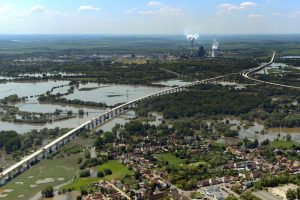
The Community of European railways and infrastructure companies (CER), the association of the European rail infrastructure managers (EIM) and the association of the European rail supply industry (UNIFE), have presented a rail commitment ‘to play an ever more important role’ for the implementation for the EU forthcoming Sustainable and Smart Mobility Strategy which is expected to be adopted in the fourth quarter of 2020.
Through the joint statement, the three associations presented their views, expectations and priorities for the DG Move’s forthcoming strategy, highlighted railways’ essential role to reach Green Deal climate objectives and pointed out the importance of 2011 Transport White Paper which should be used as the basis of the future European transport strategy as it underlines the same concept European transport system must meet – to create a seamless and a single European transport area.
“It is crucial for Europe to have a strong, future oriented mobility strategy that places green transport such as rail at its heart. The European Rail Infrastructure Managers are highly motivated to fully exploit the potential of rail and to tackle the future challenges,” EIM Executive Director Monika Heiming said.
The associations detail the way railways can contribute to the European Green Deal achievement as this it is the only mode of transport which has reduced its emissions, while increasing passenger and freight volumes and improving its energy efficiency. In addition, Europe’s rail sector has pledged to reduce total CO2 emissions for passenger and freight transport by 30% by 2030 compared to 1990 levels, a target which can be meet, according to the International Energy Agency (IEA).
Regarding the White Paper, although it was published in 2011, it pursues the same principle and concepts the Green Deal requires – the decarbonisation of transport sector. “This his is notably the case for freight transport, where a <substantial part> of road freight should be shifted to rail and inland waterways. The White Paper aimed to push European transport to become more sustainable and integrated. By setting an EU-wide policy framework for the whole mobility sector, all transport actors and modes were encouraged to reinvent themselves according to a cleaner, more modern paradigm,” the joint statement says.
The associations’ rail commitment also details some specific principles which should be considered by the new EU’s transport strategy such as the ‘polluter pays’ and ’modal shift’.
Railway transport has also the potential to contribute to a digitalised transport system as it is using the new technologies to modernise the infrastructure and the fleet – with battery and fuel cells or alternative propulsion systems.
More than ever, the railway transport is involved in the research & innovation which is a “powerful enabler of technological progress and economic growth.”
“Rail is entirely part of the solution needed to fulfil the Green Deal’s climate neutrality ambitions. European rail manufacturers are committed to making rail the backbone of a sustainable and smart mobility system, supported by digitalisation and Research & Innovation,’’ UNIFE Director General Philippe Citroën said.
“Through the activities of the Shift2Rail Joint Undertaking, the whole rail sector has worked towards a more digital integrated and cleaner transport system, especially in crucial areas such as energy efficiency. Sustainable and smart mobility are at the heart of collaborative research in rail therefore the strategy should support the continuation of Shift2Rail within Horizon Europe 2021-2027, with a strong budget.”
“Building on their strong environmental credentials railways must be empowered to fully play their role as the backbone of a digitalised and seamless multimodal system in the forthcoming strategy for sustainable and smart mobility,”CER Executive Director Libor Lochman explained.
The associations believe that the European Year of Rail is an ideal framework to start implementing the new transport strategy.
Share on:



